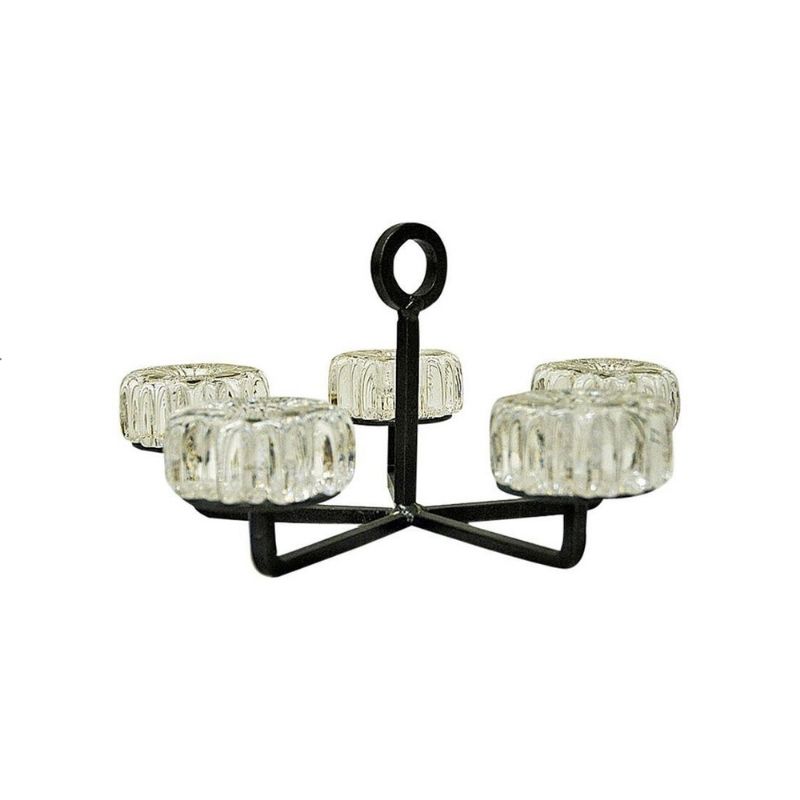pt.2
I believe what underlies Koen's and my differences on this, in addition to the fact that I am a relative ignoramus in comparison to him on such matters, is that he has more rigorously adopted a philosophy of "if it ain't broke, don't fix it," than have I to date. He evaluates Pawson more globally than I am. He gives more weight the value of continuity of working forms from the past in the trade-off analysis of how much to change a thing than I am. He is saying in that best of European traditions, "Yes, innovation is good, but we don't need to change something that works, even if we do not fully and rationally comprehend why it works." I am saying in that best of American traditions, "Yes, tradition is good, but we can endure a good bit of disconuity in tradition to get the benefits of innovation and development and evolution that adv advance the overall legacy of the tradition, even if we do not fully and rationally understand all of the possible unintended consequences of changing."
Koen is a European who has entered the new world tradition to try to hybridize and at the same time preserve what he knows.
I am an American (and I use this in the sense of North, Central and South Americas)who has entered the European tradition in order to accomplish the same (though, to be sure, I have not been able to do more than travel Europe and engage intellectually with Europeans as much as possible).
Well, you can take the boy out of Kansas City, but you can not entirely take Kansas City out of the boy.
Likewise, you can take the boy out of Antwerp, but you cannot entirely take Antwerp out of the boy.
Koen almost certainly understands more deeply and subtlely the ways in which Pawson's design works for the brothers, because he is almost certainly more steeped in the monastic tradition of European culture and history. He grew up in its shadow, so to speak, whether he ever interacted with it directly or not.
pt.3
I on the other hand almost certainly am more liberated from that traditon, as I grew up being liberated from that tradition from the beginning. It is not at all hard for me to see what is obviously anachronistic (like putting a wow factor high ceiling in a monastery where no laymen need to be attracted), after I think on it for awhile. I do not need to be trained in the European master craftsman tradition as the estimable (and to me beloved) Koen is in order to master the obvious, though God I wish I had been fortunate enough to have gained that training, and though I suppose, about now, Koen is wishing the aboriginal Mr. Wilson had been, so that the aboriginal Mr. Wilson could shut his yap and accept what has worked since shortly after the time of Grendel and Beowulf. 🙂
What I hope tips the balance in this discussion in my favor on this issue of whether Pawson's work for the brothers was mannerist, or the genius of sticking with what has worked since the Middle Ages, while contemporizing it with in my opinion anyway is a superficial application of minimalism, is the fact that Mr. Pawson grew up in the English branch of the European tradition just as Mr. de Winter grew up in the Belgian branch of the European tradition. Mr. Pawson and Mr. de Winter are, therefore, somewhat prone, by place of birth and rearing, as well as superior professional training and likely orders of magnitude greater intellects, to value the trade offs of adhering to tradition more so than the aboriginal Mr. Wilson does. (Exhale.)
Now, all that being said, as I have indicated elsewhere, I have no intrinsic objection to minimalism. It is one approach to solving any given design/architectural problem that can have superior utility in some instances and not in others. It is one tool in a tool box, just as brutalist design is one tool, and just as modernist design seeking neutral bouyancy and an emphasis on space over surface is another, and as post modernist design emphasizing surface and ornament is another, and so on. And, of course, the minimalist method brings trade-offs, i.e., costs and benefits, that a designer/architect has to weigh and make choices about, as he/she does during consideration of any of the tools in the tool chest of design/architecture.
pt.4
My problem with Pawson is that IMHO he applied minimalism rather superficially, certainly not thoroughly. My problem is that he applied minimalism as an ornamentation on a medieval design. I just cannot believe, or come rationally to conclude that the medieval form, massing and space program for monastery buildings is the best we can do today for the brothers, even if they are happy with the result.
Do no misunderstand me however. If Pawson gave the brothers a bunch of other design solutions that actually more thoroughly applied minimalism and the brothers narrow mindedly rejected them, then I can see why Pawson threw up his hands and perhaps said, "Oh, what the hell, let's smooth the textures, do away with some of the bloody windows, give'em the damned high ceilings, slap a coat of white paint on all of it and be off to the pub, shall we?" But that intentionally irreverent (I've been too reverent for too long in this epistle)version of events just does not square with the quotes of Pawson and the brothers regarding the process. What appears to have happened is that what we see is pretty much what Pawson iterated through with them. There is no indication that he ever intended to do do much more than stick with the medieval plan, introduce some sharper edges, and paint it white.
Again, I say, this is mannerist architecture and I am neither convinced that it rigorously represents the brothers philosophy, nor that it rigorously solves their space needs.
OK..
I struggle a little with : 'he applied minimalism as an ornamentation on a medieval design' I don't see how minimalism can be applied a ornamentation (of course I see how it can be applied as a concept, but this is different)
I don't have access to St Bernard's 12th Century architectural blueprint for the Cistercian Order, but I can't help feeling it is sure to be almost akin to Pawson's feelings on architecture in general, and his own more specifically.
Therefore I conclude that the design does represent their philosophy, and was vigorously vetted at many points along it's conception to ensure this; St Bernard's blueprint is, by all accounts, a weighty tome, not a scant list.
On this one, I think we will agree to disagree, but I have to say; it's nice to be able to disagree on here without either party being disagreeable, as has been a little too prevelant of late.
Robert
please drop the 1960 ..it's so aging 😉
Yes, yes, yes...
The point of a forum discussion is, first, to add incrementally to what each individual knows by discovering what one has not already thought of, and, second, to bring into greater focus what each individual thinks. Agreement is completely unnecessary for learning.
I have learned a great deal and increased the focus of my thinking through discussing this with you. I only hope I have done something similar for you. Developing the effectiveness of your disagreement, or agreement, with me is giving in kind. My goal is never to win here and that is why I playfully placed this discourse with Koen within the metaphor of a sparring match between a plug (me) and a champ (Koen). You're simply another champ who got into the ring to train a little.
Persuading, winning, gaining compliance, and agreement are what must be done in business, war and child custody battles. 🙂
Here all is learning. Criticism can be vigorous, if it is criticism about the substance being discussed. Total disagreement is always a respectable, unthreatening option, if it is expressed respectfully.
For me, the best threads of the forum are a little like The Actors Workshop. Briefly, we set aside the business fact that Koen is a world class designer and I am just knuckle dragger who cares. We set aside that if I were conferring with him as a client it would necessarily be more charged and there would necessarily be more predisposition to position strategically to win if necessary, rather than learn. We set aside inhibitors like my lawyers and his lawyers, realities of revenue and cost trade-offs, and the real need to get it done at least adequately for my use and at least profitably for his survival. We come together as a mastercraftsman and a novice (well, I suppose I am much less than a novice, since I am not even trying to become a designer).
pt.2
Koen brings his wealth of knowledge, experience, expertise and humanity to share. I bring the freshness of a wide-eyed student, who he has decided the rest of the class can learn from by viewing my instruction. He brings how it has been and how it is, plus the perpetual hunger of a mastercraftsman to be challenged. Academics, colleagues and clients have brought him many challenges. But by this stage of his career he now understands the limits of the challenges they tend to bring. The sheer lack of learning of students, and of would be students like me, confronts him with points of view, half expressed notions, that at least occassionally surprise the champ. He's used to boxing with trained opponents who know you never drop your right to jab, but this plug just bores in with right and left flying. Its something to think about. Its not that the plug has the new and better technique that the champ can learn from. It is that the plug creates a peculiar set of circumstances for the champ to unleash his laser like focus and skill upon and devise something new out of himself...maybe...once in a great while...and regardless break a sweat...and break up the drudgery of doing it every day. Ah, but I've left behind my Actors Studio metaphor and drifted back to training a prize fighter. Well, that's okay. Writing doesn't have to be perfect in the forum either.
Judging from Koen's recent silence on the matter, and from your doubts about the validity of what I am saying, the plug is probably throwing some wild punches that the champ has seen before and can't really be energized by. Well, that's okay, too.
(The plug sits down in the corner and gets a squirt of water from a broken down old trainer named Vinnie in his corner.)
"This here is the best I can dooo, tuhday, Vinnie. Ahm given the champ my best shot. I ain't got no more gas in the tank than this, see? I ain't no kid no more, ya know? It ain't like the old days when there was still a chance for a title shot."
"Aw, ya mug," Vinnie says, splashing the plug with a sponge of dank water, "don't worry 'bout nuttin' see? This is just trainin' kid. Just a woyk out. (Vinnie holds up one finger.) How many fingers ya see, kid?"
"Three."
"Poyfect, kid, poyfect. Now get back out and show da champ whut you got. That's all ya gotta do, kid, ya don't gotta win nuttin' here. This is just anudder woykout in da gym."
Its about learnign...all about learning.
Thanks for commenting, Robert.
I guess that nobody...
...was ever in doubt about the outcome of this fight. I for one am tempted to accept a technical K.O. but I would love just another round?or two.
But first a few comments?
It is not completely true that there is no other precedent in modern design of high back rests. When Arne Jacobsen (no less) designed the chairs for the counsellors of the St. Catherine's College of the University of Oxford, he gave them high back rests?The fact that they are still in production shows that there is some interest for this and other symbolic ?mannerism?.
Another comment that is not directly related to the quality of Pawson?s architecture. Having some experience in monastic life, not as a participant but as a close agnostic observer I have to point out that the expectation that because ?.monks have already pledged themselves to the order more or less for life. They do not need a wow factor to keep them coming, is not completely true. Monks as anybody else need a certain amount of ritual. Many middle management staff knows that there is no merit in wearing a tie, yet thousands will make the traditional knot every morning as part of getting ready and in the mood for the job?Yes they already know the liturgical drill and yes they are supposed to be trying to live a fairly ascetic life, while knowing it. The monks are indeed full of the spirit of and love for god, as couples are full of love for each other, but it does not mean that they are not human and not in need of this traditional form language to keep up and nourish the firm beliefs that has generated it. In other words it is not wasted on them; it is part of what they experience as upholding the status they have chosen an in some degree it is the confirmation that the rules St Benedict gave them of eight hours of work, eight hours of sleep and eight hours of prayer is not just a routine but such a regulated one that it suggests them this notion of an eternal repetition. Those who have seen the questioning that animated these communities in the sixties and seventies know that the erosion of the ritual, the loosening of the rules and dress codes are intertwined with the decline of the attraction to monastic life. We on the other side of the faith barrier do not have to rejoice in it to understand that it is deeply human to balance innovation with continuity. But back to the discussion at hand.
Sorry I do not know why the link is nothing more than three dots but it is a link to the Arne Jacobsen Oxford chairs
http://www.danish-furniture.com/designers/arne-jacobsen/#arne-jacobsen-o...
cont.
If I understand DCWilson well, he acknowledges the value of established architectural archetypes like height, dwarfing acoustics, special depth and avoidance of a flat facing wall that would indicate too clearly that the space ends there, double row facing monks and spatial emptiness, but, wonders if it would not be the role of the modern architect to re-create these same effects?assuming that they are needed?or the most significant and relevant part of it, with a more innovative form language, in other words with contemporary and re-thought means?If that is the case, I have to agree that his expectations have not been met. It is not different from Frank Gehry?s often quoted comment on context and his unwillingness to take it into account. One can not question the measure in which he succeeds in taking the context into account if it was never his intention. The question is, are these expectations justified. In a world in which we entertain the importance of polarity in a kind of Buckminster Fuller way, of the smallest quantity is not one but two, in other words a world in which we can only think in a minimum of two opposing views, in this case opposing creativity and continuity, we might as DCWIlson suggest give a higher ranking to creativity and draw the conclusion that the Pawson design is lacking this in very much the same way as mashup music uses existing fragments and lacks the creativity to reach the same musical effect by completely new sound. But the question is really, is this early Hellenistic view of opposing and competing visions still valid or have we strayed away so far that it becomes difficult to look back and find the better way.
By writing, in my own modest way the essay that is still on this website: thoughts on originality, I have tried to make a contribution to questioning the supremacy of creativity. The background was my own experience that time and again showed that there was such a blatant gap between the search for originality on one hand and the service of the community on the other that we as designers and architects have written so highly in our codes of ethics. I called it originality and not creativity because creativity is such a badly understood notion that for one means a self absorbed way of thinking, to the other a theatrical way of communicating, what is usually called self expression etc. which ads to the confusion because creating is really making something out of nothing. Anyway, my purpose was to underline the simple fact that this search for originality is hurting us more than it is serving us and so we should find new standards to judge the pertinence of our design actions and at the same time the pertinence of supporting that media generated übermensch image of the charismatic designer that finds it?s only justification in media exposure.
cont.
I do not know it this kind of questioning has anything to do with the fact that as a kid I could stand in the entrance of the St Mary?s cathedral of Antwerp at the very spot where Thomas Moore?s choose to start his Utopia. When you are standing there, you are not only looking at one of the best spots on earth to eat mussels and fries, but also at a small forged structure above a waterwell. It was forged by Quinten Matsijs, a 15th century painter. As far as I can remember the well has the following inscription: De liefde maakte van de smid een schilder. Literally it means Love made from the blacksmith a painter. It refers to the history of Matsijs who was a blacksmith before falling in love with the doaughter of an Antwerp painter. In order to convince the father he to became a painter. My own grandfather was a blacksmith and when we looked together at the intreging piece of eloquent forging, he said: The story is an unconfirmed legend but the meaning is still the same: if as a craftsmen you do things with love you will be seen as an artist. In other words: Love makes from a craft an art. It might sound too anecdotic by now, but the lesson is still that we can not create without a purpose without a love for someone or something. In doing so we might benefit from reflecting on whom and why we do things and why we would see some kind of hierarchy in the means by which we do it. Why would creativity be higher ranking than borrowing when not the means but the purpose is of the higher importance.The idea of looking again and again, with different eyes and intentions at known forms is not new. Other human activities like music do this all the time. We take a score written by a talented 17th century composer, look at it with the eyes of a mid century Canadian interpreter and we are listening to J.S.Bach?s Goldberg Variations played by Glenn Gould, an undisputed masterwork of the 20th century. I know, the Pawson monastery seems to be a compilation of known form only and slightly enriched with these reversed U shaped windows but it is so effective in serving the purpose of not distracting by sculptural from?.as is Notre Dame de la Haut by Le Corbusier,?of building a space to the service of at best, an abstract notion of the predominance of love, in some mystic way embodied by a father figure that resides in heaven, and who?s commandments are so easy to interpret...no, let's not go there
Sorry for being late in my answers. It has little to do with my boxing training, it is just a very busy time for someone that tries to keep so many balls in the air at the same time. Let me be clear on this: I for one enjoy every word DCWilson puts in front of us, not only for the content but also because he is such a talented word-smith
http://video.google.com/videoplay?docid=-6984208089899995423
...
i'm truly amazed in how sofisticated manner can such a disputable topic be discussed on this forum 🙂
I'm not a collector, not any big MCM devotee, I've found DA while searching for Koen's assay,
inspired and motivated by his presence and speech at Cumulus conference in Slovakia.
since then I became a real design addict 🙂 I must admit, I'm not any good writer, especially english is quite a hard nut
for me, but I feel that expressing one thoughts on design in this forum is really big lesson in which one can learn a lot.
for threads like this one I'm really thankful, as I would never realize the depth of ideas that could be connected
to such a simple statement about Pawson monastery. I miss such discussions in my school, and I think those
are sometimes even more important than neverending effort to think up new ideas.
thanks a lot and please don't stop arguing:)
Post script
I wonder if there is a firm definition of a creative community. But no matter how large and deep
that definition should be it would have to include the kind of community that DA has become. No matter how widely spread, no matter how many time zones we cover, no matter the differences in
the many languages we speak and disregarding the level of fluency in our common language, we are a community. Some may call it a virtual one, but there is nothing virtual to any of us. We are all quite real.
I do not know to what extend we can claim some impact in our respective communities but there is no question about the impact of this forum on us as a community. Looking back I realize that my first interest in answering questions about mid century design was a historical one. Arne Jacobsen, Verner Panton, Hans Wegner, George Nelson, Ingo Maurer etc. were people I had met learned from and with some I even had a beer?but I am not a collector and if some people have that impression when visiting us it is simply because we only broke a few of our Arabia set, still use the Stig Lindberg dishes and Kristian Vedel melamine and have never changed the Borge Mogensen furniture we bought at a time we could afford it. But I kept reading the comments on originals versus copies, the many ways one can change the chock mounts in the Eames chairs and the inevitable quests for an early prototype of a yet to be discovered mid century designer. Beyond enjoying how mid century history was re-written in the beginning of the 21st, I must admit that the pleasures were thin and short. It has taken me some time to realize that this retrospective look at recent history is in fact a major contribution to design. Collecting as such may not be new but to generate value by rehabilitating the product and the story that it supports is without any doubt a major contribution to a different perception of what products are. In the context of our ongoing problem with the use of resources and the destruction of the environment this is the missing K in the three R?s: Re-use Reduce, Recycle. The missing R is a K: keep using.
I do not think that we have made a major impact on the landfills that litter our country sites yet but there is something promising in restoring value, not only by telling the story or by encouraging people to live with the traces of use and age, but also by doing it selectively. The selection is not just a privilege of the insider it is much more. I see it as an encouragement to the present generation to strife for the quality that will defy obsolesce, to design at a level that will not only show the preferences of our times but that transcend the present into an even higher value in the future.
cont.
As a community we are making a contribution to this and I am sure that it is a significant one. With the DA vase we as a group have shown that design in collaboration is not inferior to the contribution of one illuminated individual. In other words a committee does not necessarily produce a camel when thinking about a horse.
Brnki points out yet another achievement of DA and I think our hosts Alix & Patrick should be proud of it and all of us should hit ourselves gently on the back, not as a gesture of well-done, but to push ourselves forward in the same direction, it seems to be a good one!
If you need any help, please contact us at – info@designaddict.com









